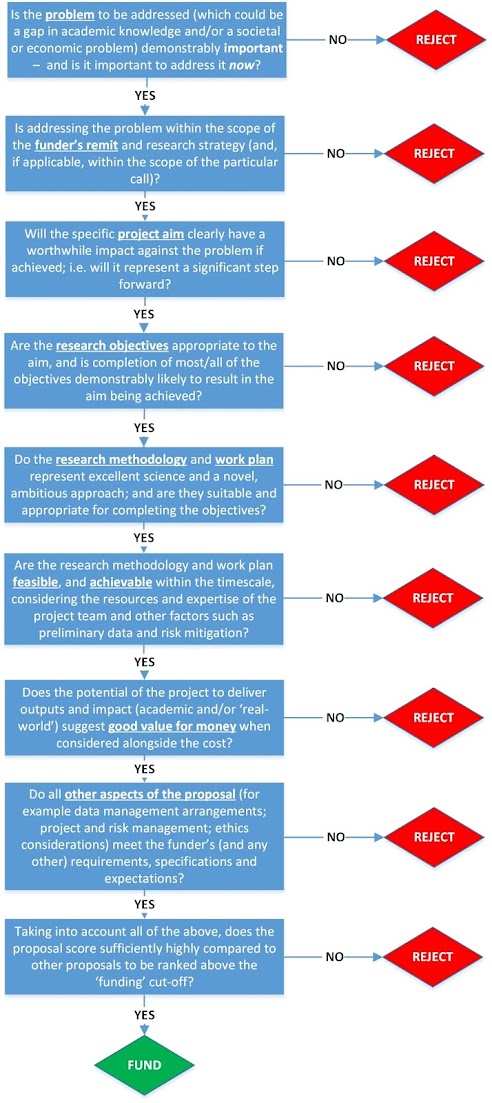Perhaps unsurprisingly given that I’m a bid writer, I spend quite a lot of time trying to get inside the mind of a ‘typical’ proposal evaluator (reviewer or panel member). How does she really think? What is the decision-making process that concludes in him liking or not liking a proposal? And how can we influence that process?
Is there even such a thing as a typical evaluator? In my more ideological moments, I like to think of them as super-humans with almost mythical levels of intelligence, able to scan through large piles of proposals with astonishing speed and assimilate their respective merits and demerits without favour or bias before ranking them perfectly according to a complex matrix of criteria. Such is their accuracy and consistency, any two of my super-human evaluators would rank that pile of proposals in exactly the same order.
I’ve never sat in on a grants panel, nor reviewed proposals for a funder, but rumour has it that the above characterisation may not be entirely representative. Certainly, we’ve all seen instances when two reviewers’ opinions on the same proposal appear to be diametrically opposed. And while the panel itself may subsequently impose a measure of sanity in such situations – the wisdom of crowds in action, perhaps – some of those individual panel members may not be quite as ‘on-it’ as we’d like to think they are. I’ve seen it suggested – admittedly with tongue at least partly in cheek – that there are often three identifiable types present on a grants panel:
- The one who knows everything: Has a robust opinion on all the proposals, dominates proceedings and seems to know a great deal about many things
- The perpetually-baffled one: Seems to struggle with many aspects of all the grants under review, leading to lots of questions and difficulty forming a definitive opinion
- The slightly scatty one: Appears to be at least four grants behind the panel as a whole, and may not be as familiar with each of the proposals as perhaps they might be
Of course, if you’re a panel member yourself then I’m sure you don’t fall into any of these categories. But perhaps you’ve encountered them? How then to write a proposal that accommodates all the different types of evaluator who might review it?
You are, in essence, telling a story,
and it’s vital that the story you tell in your proposal weaves in all of the
essential points that will guide the evaluator to the decision you want them to
make.
So what about catering for those less-than-perfect
evaluators, like the three caricatures we met above? My advice would be to
ensure that your proposal is presented as clearly and as nicely as possible. By which I mean well-ordered thoughts and a
logical narrative flow; clear and straightforward language that is no more complex than it needs to be; and presentational niceties such
as hierarchical headings, white space,
figures, and so on. The sorts of things, in fact, that I consider in some of my
previous blog posts.
The views and opinions expressed in this blog are mine alone and are in no way endorsed by my employer. Factual information and guidance are provided on a 'best-endeavour' basis and may become out of date over time. No responsibility can be taken for any action or inaction taken or not in respect of the content of this blog.


Thanks Dom, extremely helpful.
ReplyDelete